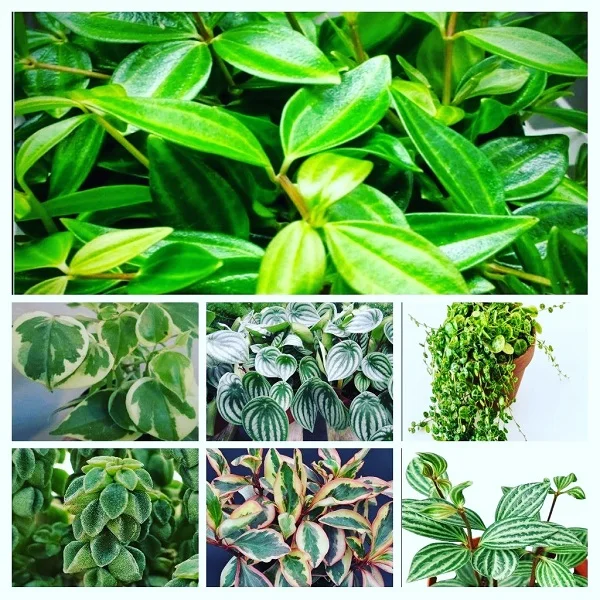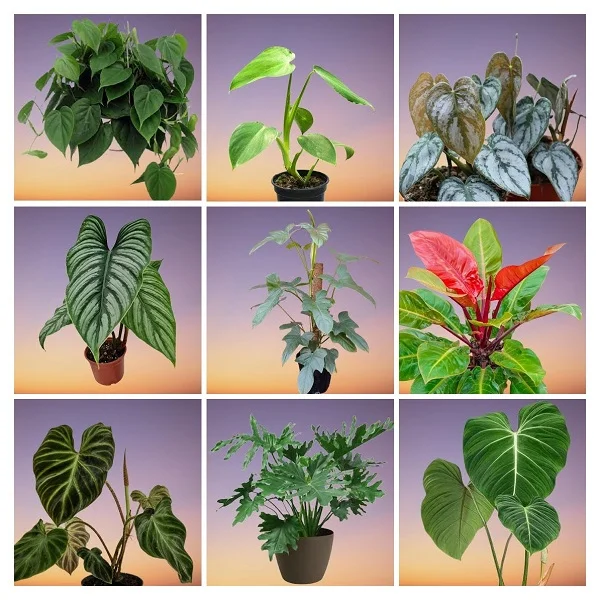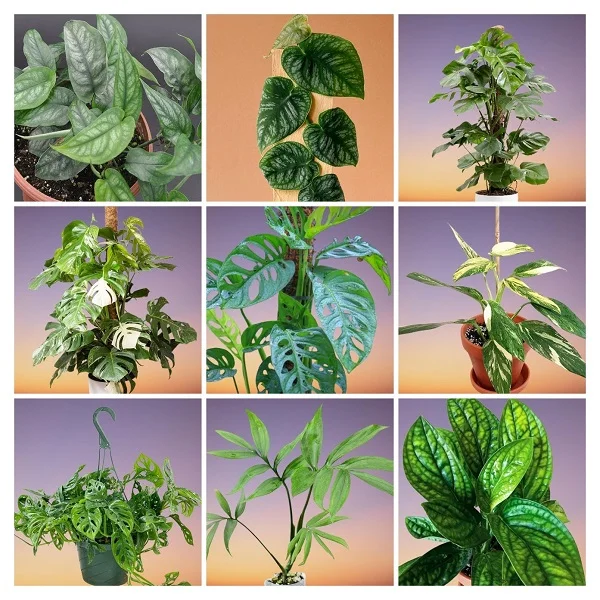10 Stunning Tradescantia Varieties with Pictures and Care Guides
Some links in this post may be affiliate links
Tradescantia Plants commonly called Inch Plants, Spiderworts, Wandering Dude, Dayflower or Trad. are popular plants which easily adapt to indoor growing conditions.
About 85 species of Tradescantia varieties are available which exhibit varied colors, leaf shape, texture and growth habits.
Majority of the Tradescantia plants have a trailing or creeping growth habit which makes them perfect for a hanging basket. They are some of the best plants for hanging baskets.
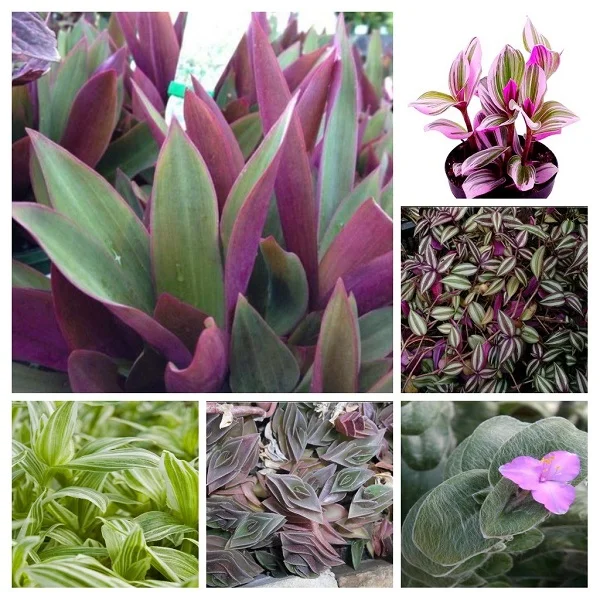
Tradescantia plants are so popular and easy care even for a beginner that it is not unusual to find at least one in the home.
The Tradescantia genus belongs to the Commelinaceae family and are native to the Americas from southern Canada to northern Argentina, including the West Indies.
Tradescantia Plants are a pleasant addition to any plant collection and will elevate your home decor. We have below a list of 10 of the most popular Tradescantia Plants that grow perfectly under room conditions.
10 Beautiful Tradescantia Varieties for Indoors
Our list of the 10 best Tradescantia Plants include Tradescantia fluminensis, Tradescantia pallida, Tradescantia spathacea, Tradescantia zebrina, Tradescantia albiflora'Nanouk', Tradescantia x andersoniana among others.
1. Small-leaf Spiderwort (Tradescantia fluminensis)
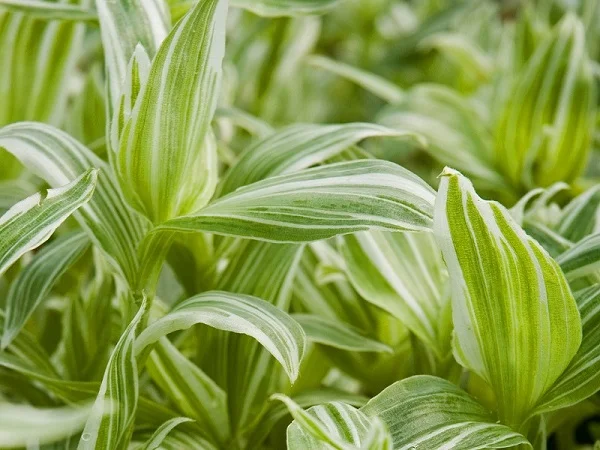
Small-leaf Spiderwort also called Wandering Trad, Inch Plant, River Spiderwort or Wandering Willie are fast-growing plants whose leaves, about 2-4 inches long, tightly clasp the creeping or trailing stems. The undersides of leaves are pale purple (mauve) and it produces pale purple sap.
Wandering Trad has the varieties variegata with cream striped leaves, Quicksilver with white striped leaves, tricolor whose leaves are striped with cream and purple, among others.
Inch Plant thrives in bright, indirect light, average warmth of 16-270C, moderate humidity of 50-55% and consistently moist, fertile, well-drained, all purpose soil coupled with fortnightly feeding during the growing season.
Read more on Tradescantia fluminensis Indoor Care, Propagation and Problems
2. Purple Heart Plant (Tradescantia pallida)
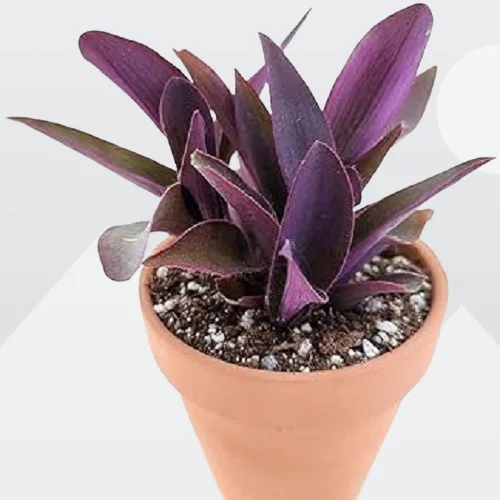
Purple Heart Plant also called Purple Queen bears leaves which are elongated, pointed, slightly hairy, glaucous green, fringed with red or purple. It is one of the popular purple-leaved plants for the home.
The flowers in Purple Heart Plant are small, sterile, three-petaled and are white, pink or purple. The stems are clearly segmented and roots easily grow from the joints.
Purple Queen grows best under bright, indirect light (filtered light), average warmth of 18-270C, moderate humidity of 50-55% and moderately moist, fertile, free-draining, all purpose soil coupled with fortnightly feeding during the growing season.
Learn more on how to grow and care for Tradescantia pallida
3. Boat Lily (Tradescantia spathacea)

Boat Lily also called Moses-in-the-Cradle, Moses-in-a-Boat, Cradle Lily or Oyster Plant is a low-growing plant with a short stem on which are fleshy, sword-shaped, glossy green leaves with purplish-red undersides. It is one of the best plants for for small spaces.
Moses-in-the-Cradle bears small white flowers in purple "boats" at the base of the lower leaves and hence the common names. It flowers at any time of the year if grown under good light.
Oyster Plant performs best in bright, indirect light, average warmth of 18-270C, moderate humidity of 50-55% and moderately moist, fertile, well-drained, all purpose soil coupled with monthly feeding during the growing season.
Check out our guide on how to grow and care for Tradescantia spathacea
4. Silver Inch Plant (Tradescantia zebrina)

Silver Inch Plant bears glistened ovate leaves which are multicolored above. The lef surface is bluish-green, banded with silver and edged in purple. The flowers are pink to purplish.
Tradescantia zebrina will withstand a wide range of growing conditions and easily propagates; just a node of this plant will sprout into a beautiful plant in no time. It is one of the hard to kill indoor plants.
Tradescantia zebrina blossoms in bright, indirect light (filtered light), average warmth of 16-270C, moderate humidity of 50-55% and moderately moist, fertile, well-drained, all purpose potting mix coupled with fortnightly feeding during the growing season.
Read more on how to grow and care for Tradescantia zebrina
5. Tradescantia Nanouk (Tradescantia albiflora 'Nanouk')
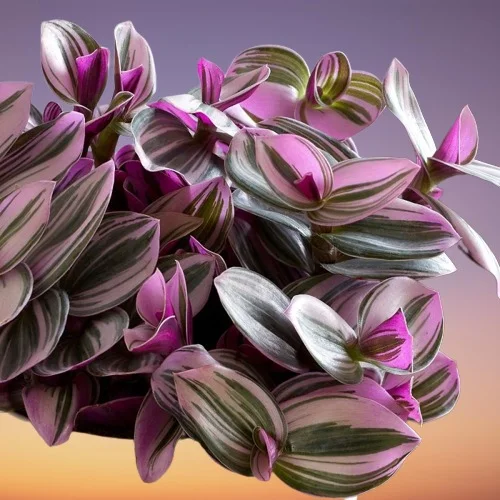
Tradescantia Nanouk also called Fantasy Venice Plant or Spiderwort 'Nanouk' bears bright green, pink & purple, fuzzy leaves growing on sturdy stems and small white and yellow flowers arising from the pink buds.
On account of its vibrant and colourful foliage, Fantasy Venice Plant is among the best plants for the living room where it will create a magnificent sight.
Tradescantia albiflora 'Nanouk' prospers in bright, indirect light, average warmth of 16-270C, moderate humidity of 50-55% and consistently moist, fertile, well-drained, all purpose potting mix coupled with monthly feeding during the growing season.
Learn more on how to grow and care for Tradescantia albiflora 'Nanouk'
6. Blushing Maid Plant (Tradescantia x andersoniana)
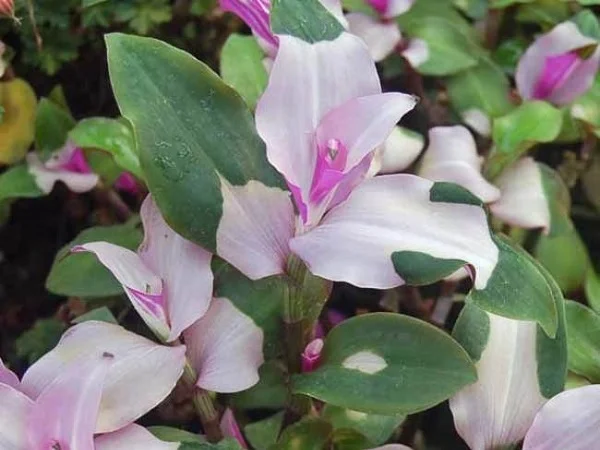
Blushing Maid Tradescantia or Blushing Bride Tradescantia is a trailing, tender perennial plant which bears pink and white variegated new growth.
When mature the leaves turn completely green. It is advisable to cut it back regularly to encourage the new growth of pink and white variegated foliage.
Blushing Bride Tradescantia grows to a height of 6-10 inches and the stems are 4-5 feet long. It is perfect in a hanging basket for a office desk without windows.
Tradescantia x andersoniana blossoms in bright, indirect light (dappled light), average warmth of of 16-270C, moderate humidity of 50-55% and consistently moist rich, well-drained, all purpose soil coupled with monthly feeding during the growing season.
Read more on how to grow and care for Tradescantia x andersoniana
7. Chain Plant (Tradescantia navicularis)

Chain Plant also called Widow's Tears or Day Flower has two type of stems which exhibit different growth habits. where some stems are short, grow upright and bear tight overlapping leaves. The other stems spread along the ground and bear more open leaves.
Tradescantia navicularis or Callisia navicularis bears fleshy stems which are tightly clasped by thick, waxy, lance-shaped, bronze-green leaves with purple streaked undersides. It is among the common succulents plants grown in the home.
Chain Plant performs well in bright, indirect light, average warmth of 16-270C, moderate humidity of 50-55% and moderately moist, rich, well-drained, succulents potting soil coupled with fortnightly feeding in the growing season.
Learn more on how to grow and care forTradescantia navicularis
8. Cobweb Spiderwort (Tradescantia sillamontana)
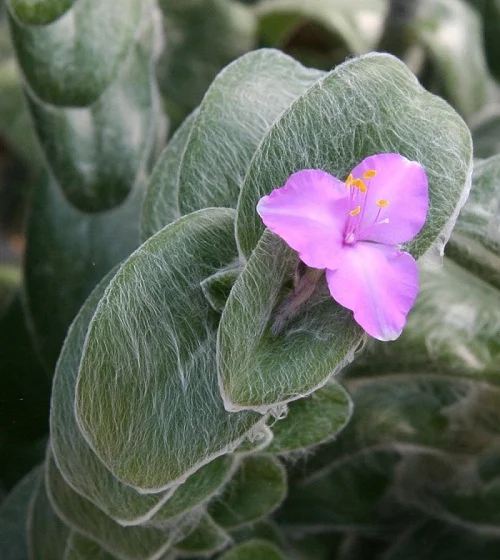
Cobweb Spiderwort also called White Velvet or White Gossamer Plant is a small upright perennial plant which bears highly branched hairy stems and oblong-lanceolate leaves in the shape of a boat's keel and may have a purple tone.
The flowers in White Velvet Plant are borne at the end of the stems and are a deep pink color. The entire plant is covered by white hairs and hence the common names. It grows to a height of about 1 ft. It is one of the best low light small plants for indoors.
Cobweb Spiderwort grows best in bright, indirect light, average warmth of 16-270C, moderate humidity of 50-55% and moderately moist, fertile, free-draining, succulents mix coupled with monthly feeding during the growing season.
Read more on how to grow and care for Tradescantia sillamontana
9. Baby Bunny Bellies Tradescantia (Tradescantia chrysophylla)
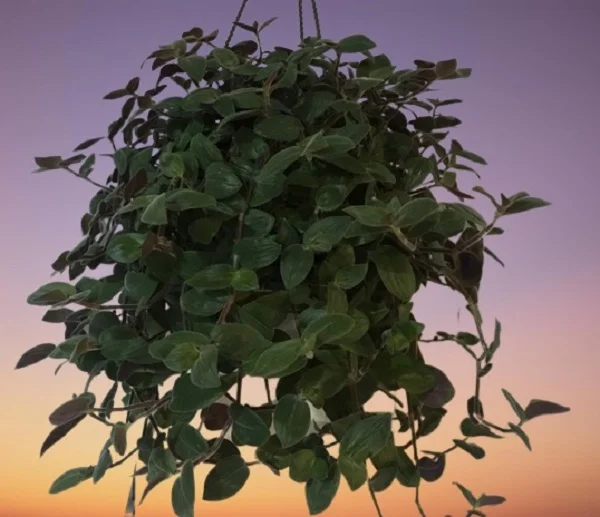
Tradescantia chrysophylla also called Baby Bunny Bellies Tradescantia or Speedy Jenny Baby Bellies is one of the most popular trailing plants and bears fuzzy foliage which feels like the under belly of a baby bunny. It is among the best plants for the home.
The velvety green leaves in Baby Bunny Bellies Tradescantia have soft purply undersides. The plant is perfect for a hanging basket as it grows to a height of 6-8 inches and can trail upto 2 ft wide.
Baby Bunny Bellies flourishes in bright, indirect light (dappled light), average warmth of 18-240C, moderate humidity of 50-55% and moderately moist, rich, well-drained, all purpose soil coupled with regular feeding during the growing season.
Check out our guide on how to grow and care for Tradescantia chrysophylla
10. Virginia Spiderwort (Tradescantia virginiana)
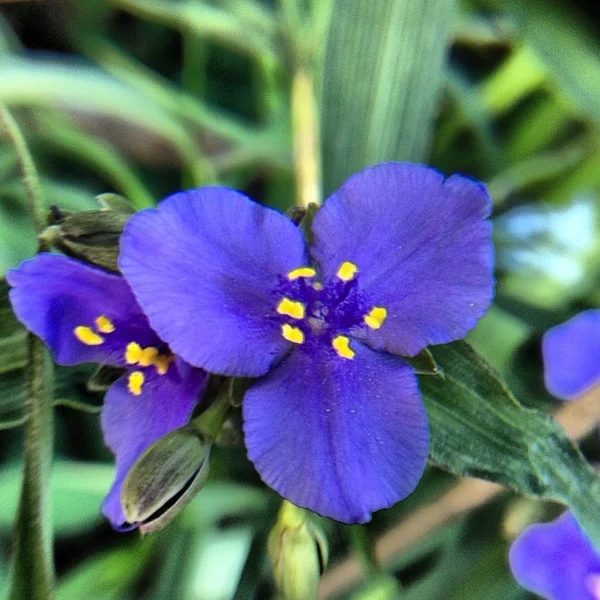
Virginia Spiderwort also called Spider Lily or Common Spiderwort is a perennial herbaceous plant with alternate, simple leaves, on tubular stems and blue, purple, magenta, or white flowers in summer.
On account of its spectacular foliage and striking flowers, Common Spiderwort isamong the best plants for the office space as it is great at brightening up any space.
Virginia Spiderwort blossoms in bright, indirect light (filtered light), average warmth of 16-270C, moderate humidity of 50-55% and consistently moist, fertile, well-drained, all purpose potting soil coupled with monthly feeding during the growing season.
Learn more on how to grow and care for Tradescantia virginiana
